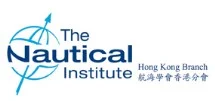Identifying and Mitigating risk
archive > archive presentations
A proactive approach for identifying and mitigating risk in dry bulk shipping
This was the title of a talk given to a packed house in Hong Kong on 8th May by Amit Gupta, who is Manager, Marine Risk at Rio Tinto. With over three decades in the maritime industry, Amit combines a Master’s certificate with an MBA from Nanyang Business School, and has previously held leadership roles in ship management and oil and gas terminal operations. He is now responsible for implementing safety standards at Rio Tinto, developing digital risk mitigation tools and ensuring vessel compliance in order to eliminate fatalities and injuries.
Rio Tinto is the world’s largest dry bulk shipper, exporting 315 million tonnes per annum via a fleet of 17 owned vessels and over 230 chartered bulk carriers. They aim to be free of injuries and promote crew welfare, which Amit described as ‘a journey to strengthen vetting, assurance and incident management processes in collaboration with their key partners.’
He started by pointing out that tankers have traditionally been seen as more dangerous, but questioned this on the basis that the most common types of accident at sea are slips, trips and falls, which can happen on any vessel. And since bulk carriers outnumber tankers, it follows that bulk carrier safety is vitally important.
As a result, Rio Tinto introduced a new Safety Standard in 1999 across all their divisions. This focused on safety, health, the environment, community and social performance, and led to a significant reduction in injuries. Sadly, however, it did not reduce the number of fatalities so in 2013 they implemented a Fatality Prevention Programme. This was successful and resulted in zero fatalities aboard their owned vessels for four consecutive years from 2019.
There were still fatalities aboard the chartered fleet, so Rio Tinto set up a number of safety and crew welfare initiatives to address the problem. They first introduced a policy which required operators of chartered tonnage to commit to raising safety and welfare standards, and followed this by establishing quarterly safety engagement workshops to share details of incidents and establish best practices. Next they increased the number of in-house vetting inspections and started training Master Coaches who travel on vessels for a period of about two weeks to help build a stronger safety culture through discussion and persuasion, rather than by coercion. Eventually, they aim to have between 100 and 200 Master Coaches.
At the same time, they use technology to assist with risk profiling and have also developed training material about their ports and terminals which they provide to vessels free of charge before the ships visit one of their ports. They are now providing all their ship operators with self-directed learning packages, which is particularly important given the long, narrow approach channels at Port Walcott and Dampier, which could easily be blocked by an errant bulk carrier, and the fact that Gladstone is within the Great Barrier Reef Marine Park and subject to additional precautions.
Together, these initiatives make up the Designated Owners and Operators Standard (DOOS) which ensures common standards and a structured platform for cooperation, and gives like-minded operators a shared vision to positively shape the future of the industry.
Rio Tinto are now seeking to partner with other operators who share their vision, and have devised a system where vessels from other companies can become part of DOOS.
Amit Gupta is an obvious enthusiast who cares deeply about safety, and his presentation was followed by a lively question and answer session. When food and drink were served, the discussions continued despite a rock concert which started at a waterfront venue nearby.

